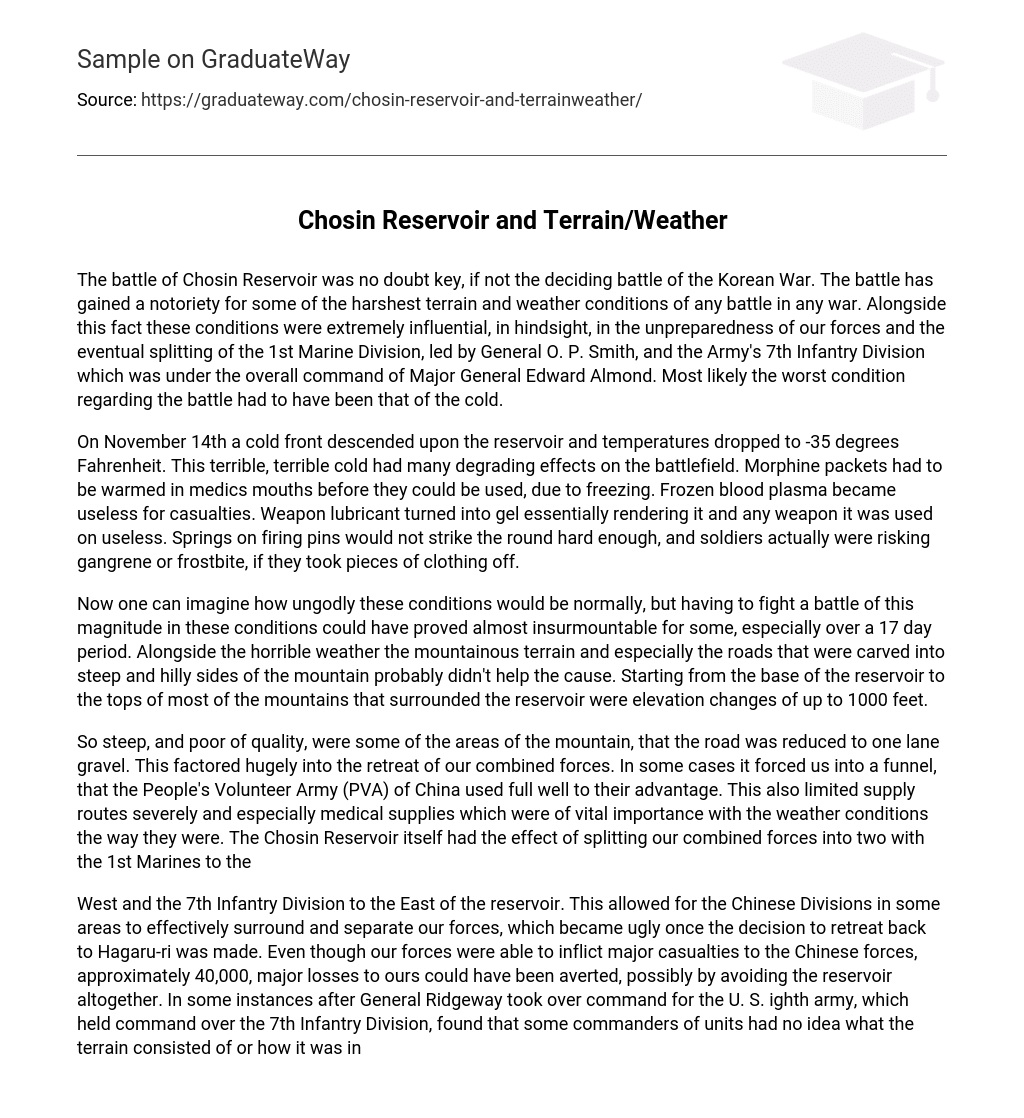The battle of Chosin Reservoir was no doubt key, if not the deciding battle of the Korean War. The battle has gained a notoriety for some of the harshest terrain and weather conditions of any battle in any war. Alongside this fact these conditions were extremely influential, in hindsight, in the unpreparedness of our forces and the eventual splitting of the 1st Marine Division, led by General O. P. Smith, and the Army’s 7th Infantry Division which was under the overall command of Major General Edward Almond. Most likely the worst condition regarding the battle had to have been that of the cold.
On November 14th a cold front descended upon the reservoir and temperatures dropped to -35 degrees Fahrenheit. This terrible, terrible cold had many degrading effects on the battlefield. Morphine packets had to be warmed in medics mouths before they could be used, due to freezing. Frozen blood plasma became useless for casualties. Weapon lubricant turned into gel essentially rendering it and any weapon it was used on useless. Springs on firing pins would not strike the round hard enough, and soldiers actually were risking gangrene or frostbite, if they took pieces of clothing off.
Now one can imagine how ungodly these conditions would be normally, but having to fight a battle of this magnitude in these conditions could have proved almost insurmountable for some, especially over a 17 day period. Alongside the horrible weather the mountainous terrain and especially the roads that were carved into steep and hilly sides of the mountain probably didn’t help the cause. Starting from the base of the reservoir to the tops of most of the mountains that surrounded the reservoir were elevation changes of up to 1000 feet.
So steep, and poor of quality, were some of the areas of the mountain, that the road was reduced to one lane gravel. This factored hugely into the retreat of our combined forces. In some cases it forced us into a funnel, that the People’s Volunteer Army (PVA) of China used full well to their advantage. This also limited supply routes severely and especially medical supplies which were of vital importance with the weather conditions the way they were. The Chosin Reservoir itself had the effect of splitting our combined forces into two with the 1st Marines to the
West and the 7th Infantry Division to the East of the reservoir. This allowed for the Chinese Divisions in some areas to effectively surround and separate our forces, which became ugly once the decision to retreat back to Hagaru-ri was made. Even though our forces were able to inflict major casualties to the Chinese forces, approximately 40,000, major losses to ours could have been averted, possibly by avoiding the reservoir altogether. In some instances after General Ridgeway took over command for the U. S. ighth army, which held command over the 7th Infantry Division, found that some commanders of units had no idea what the terrain consisted of or how it was in the front, because they stayed in the rear, and as one can see considering the way the terrain and weather were, this had obvious implications on the performance and survival of men on the line. Any way you shape it however, the battle of Chosin Reservoir is one that can almost be seen as one being disadvantageous from the start, and weather and terrain were no help in that matter.





